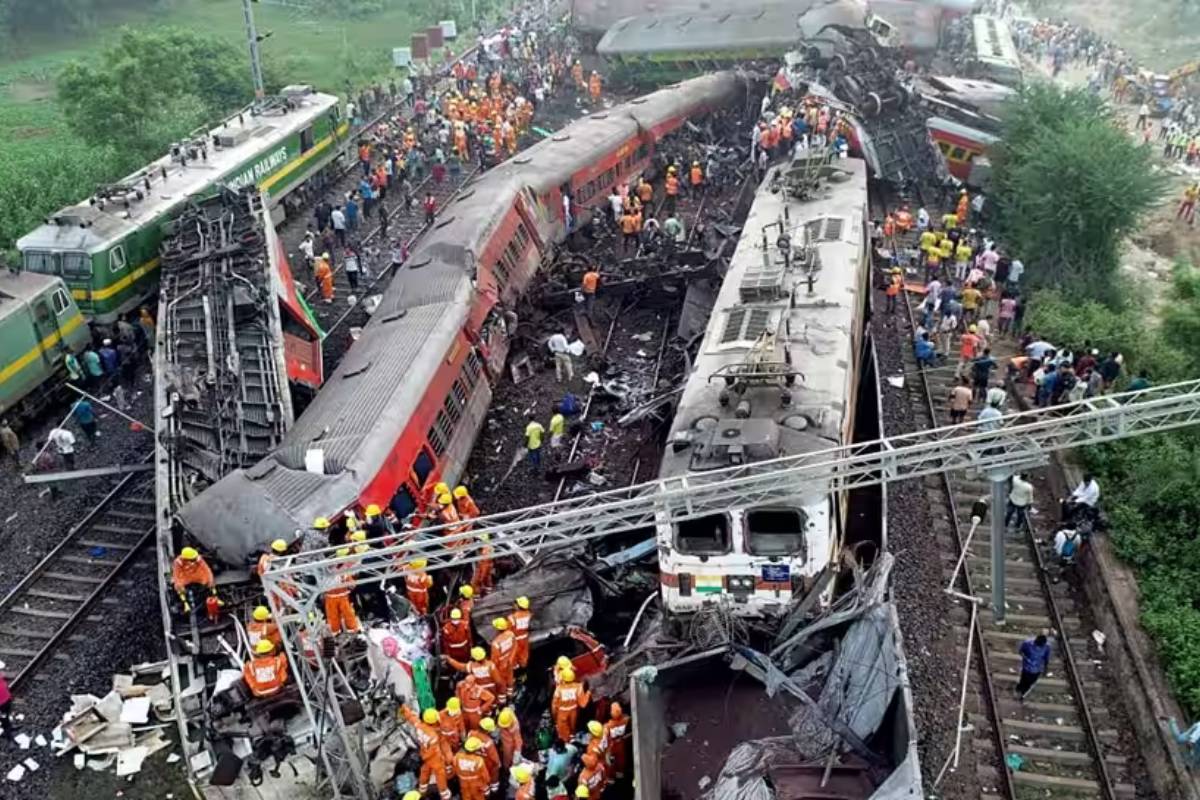NEW DELHI: Train collisions and fatalities reduced by three times under the BJP government in the last nine years as compared to the previous decade under the UPA government, as per official data.
Following the tragic Odisha train accident that claimed 238 lives, one of the highest tolls in the last two decades in India, it is crucial to understand the causes of train accidents.As per government press releases, the three-train accident was triggered by over-speeding and subsequent derailment of the Coromandel Express on Friday evening at Bahanaga station in Balasore district, Odisha. While this incident raises concerns about the effectiveness of our railway security systems, an analysis of the data indicates a significant downward trend in accidents and fatalities since 2017.
According to data sourced from the Indian Railways Statistics Department during the United Progressive Alliance (UPA) administration, there were 84 collisions, 867 derailments, and a total of 1,711 accidents. Under the Bharatiya Janata Party (BJP) government, there have been 29 collisions, 426 derailments, and a total of 638 accidents, amounting to only one-fourth of the total accidents during the UPA government’s tenure.
The UPA government reported a total of 2,453 deaths during its ten-year tenure, while since 2014, the number of deaths in train accidents has decreased to 781. Notably, there has been a sudden dip in fatalities and accidents since 2017 onwards, according to the available data. The data also points at a sudden spike even if minor in number of derailments in 2022-2023 as compared to the last two years.
Why do derailments occur so frequently?
The Balasore accident was caused by over-speeding and subsequent derailment of the Coromandel Express. A report from the Comptroller and Auditor General (CAG) highlights that between 2017 and 2021, there were 2,017 accidents, out of which 163 were consequential accidents. Of the total accidents, 69 percent resulted from derailments. Analyzing 1,129 Inquiry Reports, it was found that 81 percent of the 1,392 derailment accidents in 16 Zonal Railways and 32 divisions resulted in damages/loss of assets amounting to ₹33.67 crore in selected cases of derailments.
The audit also identified 23 factors responsible for derailments in the selected 1,129 cases/accidents across 16 Zonal Railways. The highest number of derailments (395) occurred in the Engineering Department, followed by the Operating Department (173). Among the 23 factors, the major contributor to derailments was related to track maintenance (167 cases), followed by deviations in track parameters beyond permissible limits (149 cases), and instances of bad driving/overspeeding (144 cases).
Thirteen percent of the accidents are attributable to Loco Pilots (Mechanical and Electrical Department), with “human error” being the primary cause of derailments, including overspeeding and invalid brake certificates.
How have past railway ministers performed?
Another dataset reveals the performance of different Railway Ministers. Mamata Banerjee, who served as the Railway Minister under both Vajpayee and Manmohan Singh, oversaw 54 collisions, 839 derailments, and 1,451 deaths. Under Nitish Kumar’s tenure, there were 79 collisions, 1,000 derailments, and 1,527 deaths. Lalu Prasad Yadav, who also served as the Railway Minister under Manmohan Singh, witnessed 51 collisions, 550 derailments, and 1,159 deaths.
Mamata Banerjee has been vocal in her criticism of the current Railway Minister, Ashwini Vaishnaw, and has pointed out that had the anti-collision device “Kavach,” launched by the government in 2022, been activated on the accident route, many lives could have been saved. Her party has also demanded Vaishnaw’s resignation.

